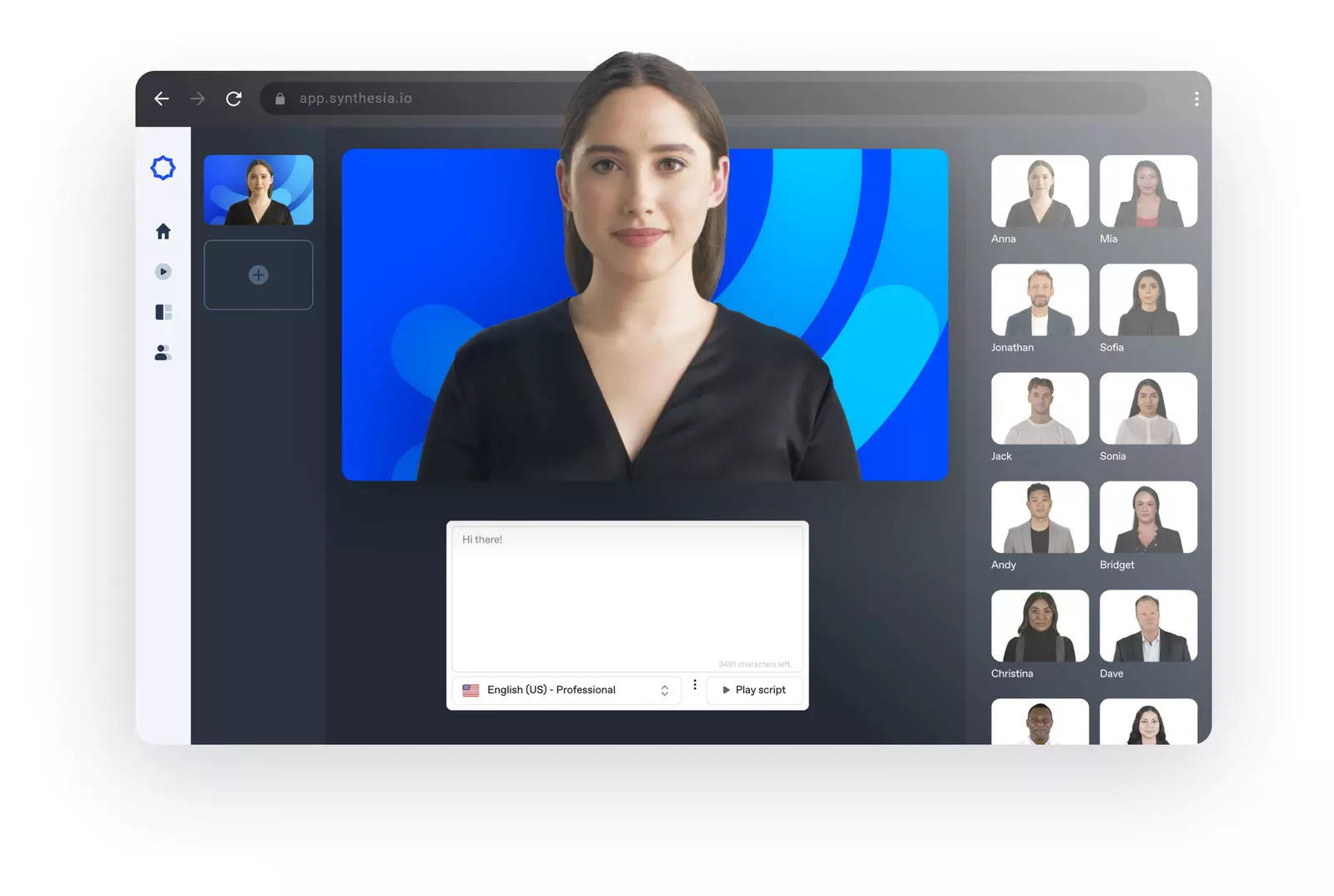Alternatives to DeepBrain AI Studio
1. InVideo AI Creator
+Pros
- Accessibility and Ease of Use with cloud-based architecture and intuitive design.
- Extensive Template Library with over 5,000 templates.
- Multi-Language Capabilities through AI voiceovers supporting 50+ languages.
- Cost-Effective Pricing Structure with transparent tiers from free to $96/month.
-Cons
- Creative Control Limitations with users reporting the AI may alter content unexpectedly.
- Template-Based Approach may limit brand differentiation for organizations requiring unique creative expression.
- Enterprise Feature Gaps include limited advanced security features and sophisticated AI generation capabilities.
One highlighted feature and why it's amazing
Forms the platform's core capability, featuring text-to-video generation, automated script writing, and AI voiceovers supporting 50+ languages.

Another highlighted feature of why it’s amazing
Provides access to over 5,000 templates covering diverse video types and industries.
2. Lumen5 Video Creation Platform
+Pros
- Proven marketing workflow integration
- Documented efficiency improvements for content repurposing scenarios
- Automated storyboard generation
- Brand consistency maintenance
-Cons
- Robotic narration quality requiring manual voiceover replacement
- Creative narrative development remains limited compared to professional video production tools
One highlighted feature and why it's amazing
Automatically analyzes text inputs to create video sequences with appropriate pacing and visual flow, reducing manual storyboard creation time by an estimated 60-80%.

Another highlighted feature of why it’s amazing
Intelligently matches written content with relevant stock footage, images, and graphics from an integrated media library, eliminating manual asset searching and selection.
3. Synthesia AI Video Platform
+Pros
- Industry-leading multilingual capabilities with 140+ language support exceeding competitors by 4.8x
- Enterprise security compliance through SOC 2/GDPR features
- Proven operational efficiency with measurable ROI through customer evidence
- Custom avatar creation with brand-specific elements enabling visual consistency
-Cons
- Quality consistency challenges with variability in expression quality and pronunciation inconsistencies
- Creative flexibility constraints limiting effectiveness for emotionally nuanced content
- Rendering delays of 30 minutes for 15-minute videos affecting iterative workflows
- Implementation complexity requiring 6-8 FTEs over 8-12 weeks and 40+ hours of specialized training
One highlighted feature and why it's amazing
Synthesia's core differentiator, offering 230+ stock avatars that exceed Colossyan's 120 options, with custom avatar creation capabilities enabling brand-specific digital humans with custom clothing and logos.

Another highlighted feature of why it’s amazing
Transforms PDFs, webpages, and text documents into complete video presentations with minimal manual intervention, utilizing integrated AI script refinement that optimizes content for video presentation.
Other Alternatives
Tolstoy Interactive Video
Videowise
How We Researched This Guide
About This Guide: This comprehensive analysis is based on extensive competitive intelligence and real-world implementation data from leading AI vendors. StayModern updates this guide quarterly to reflect market developments and vendor performance changes.
275+ verified sources per analysis including official documentation, customer reviews, analyst reports, and industry publications.
- • Vendor documentation & whitepapers
- • Customer testimonials & case studies
- • Third-party analyst assessments
- • Industry benchmarking reports
Standardized assessment framework across 8 key dimensions for objective comparison.
- • Technology capabilities & architecture
- • Market position & customer evidence
- • Implementation experience & support
- • Pricing value & competitive position
Research is refreshed every 90 days to capture market changes and new vendor capabilities.
- • New product releases & features
- • Market positioning changes
- • Customer feedback integration
- • Competitive landscape shifts
Every claim is source-linked with direct citations to original materials for verification.
- • Clickable citation links
- • Original source attribution
- • Date stamps for currency
- • Quality score validation
Analysis follows systematic research protocols with consistent evaluation frameworks.
- • Standardized assessment criteria
- • Multi-source verification process
- • Consistent evaluation methodology
- • Quality assurance protocols
Buyer-focused analysis with transparent methodology and factual accuracy commitment.
- • Objective comparative analysis
- • Transparent research methodology
- • Factual accuracy commitment
- • Continuous quality improvement
Quality Commitment: If you find any inaccuracies in our analysis on this page, please contact us at research@staymodern.ai. We're committed to maintaining the highest standards of research integrity and will investigate and correct any issues promptly.